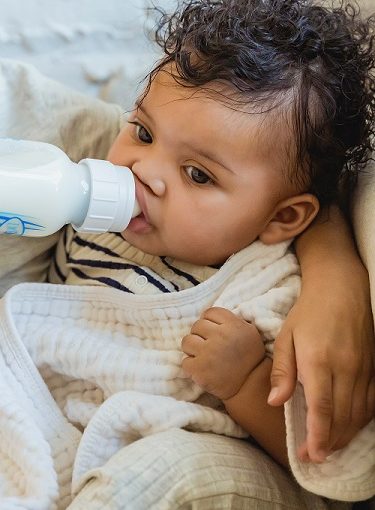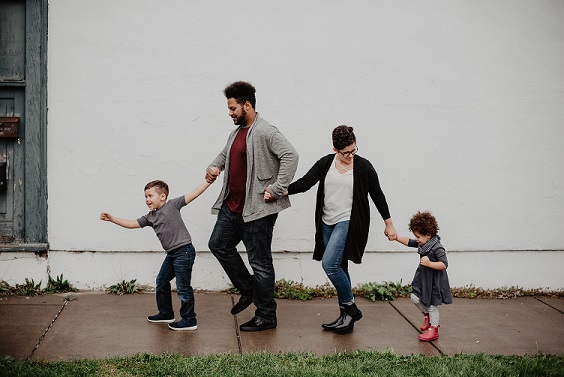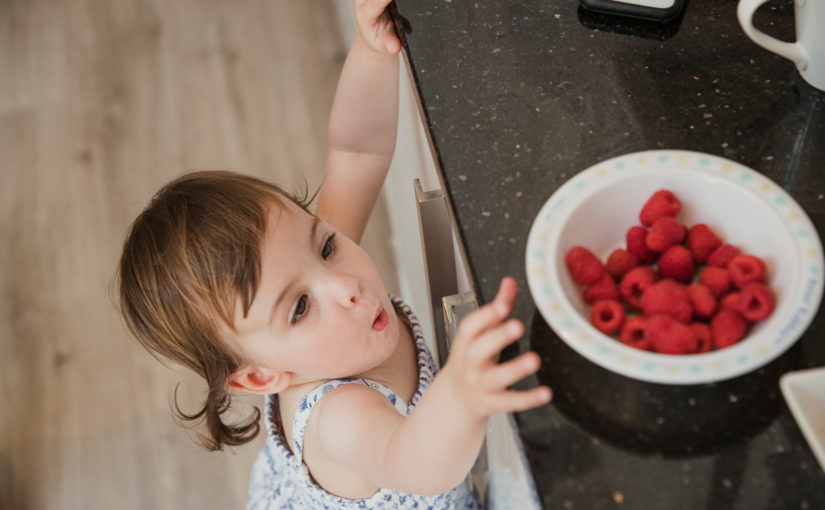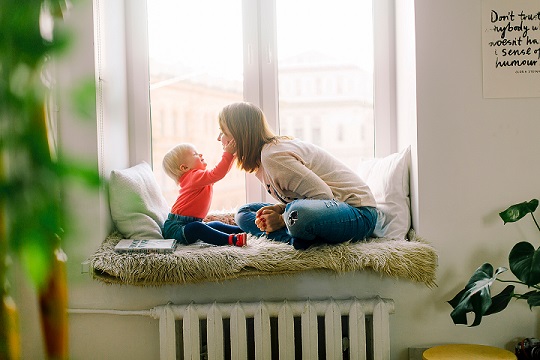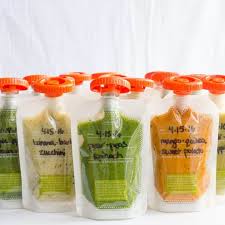EMOTIONS
Over the last 19 years working in pediatrics, mostly Early Intervention, I have experienced many parents/caregivers who have difficulty navigating their child’s emotions. Since I am there to help parents/caregivers help their child communicate, naturally we usually end up talking about the frustration their kiddo(s) are demonstrating. Inevitably, a huge part of my job comes down to teaching families to navigate and/or manage behaviors.
So, many parents ask, “When should I begin teaching my child(ren) about emotions?”. Most scholars believe that teaching children the “feeling words” and how to use them should begin around the age of 3. They believe this is when children begin to more fully understand their own and other people’s facial expressions and can use the words to identify emotions. This may be true, however, after working in this field for so long, I believe we can begin the teaching of them earlier.
Why not talk about those feelings they are having(or that you’re having) when they begin to demonstrate frustration, excitement, sadness, etc.? The earlier they hear these words and begin to see emotions on other people’s faces, maybe the earlier they will begin to identify emotions. Could this also lead to them learning to navigate how to manage emotions a little earlier on? Possibly. If anything, it may teach us adults how to navigate our emotions in order to demonstrate healthy ways to manage them. As parents/caregivers, we are the biggest source of influence for them in most situations.
Besides labeling emotions as they are feeling their big feelings or watching others demonstrate emotions, there can be other ways to begin teaching feeling words at a young age. You can point out characters in books while readying short stories, look through photos, or while they are watching their favorite shows. This can be as simple as pointing to faces and describing the emotion very simply, such as, “Oh, he’s sad”, or “Look how happy she is!”. Nothing too complicated. The least amount of words the better when they are little. You can show them those emotions on your own face and change the tone in your voice as you describe. I truly believe it is never to early to begin using feeling words while you talk to your toddler or preschooler!
FEEDING AND SPEECH DEVELOPMENT
Working in the field of Early Intervention for almost 19 years, I have the pleasure of working closely with parents and caregivers. While we are able to get some information from the child’s initial or re-evaluation, some assessments don’t capture all of the crucial information in regards to early developmental milestones. This occurs especially in the area of feeding. Unless the child presents with clear cut reasons for a feeding delay or difficulty(specific diagnosis, tube fed, etc), the Speech Language Pathologist(SLP) may be the first person that identifies early issues with feeding development contributing to the speech delay. The child may still have difficulties or delays with feeding that go unaddressed even at 18 months- 2 years of age! Why are feeding delays or difficulties contributing factors to speech delays? When babies do not get opportunities to learn oral movements for drinking, chewing, and swallowing, these same movements will be more challenging to use for the combination of movements required for speech. Also, take into consideration the coordination required to use voice or not, respiratory functions, and rapid motor movements all at the same time. Wouldn’t it be better for children to have practice with oral motor movements before combining multiple systems? Of course, there are reasons that babies can not have opportunities to practice oral skills while feeding, but the focus for this article will be children who are not physically unable to eat. Here are some things to monitor and have conversations with your pediatrician regularly about:
- Difficulty latching to breast or bottle.
- Slow feeding from breast or bottle and/or inconsistent sucking.
- Choking while feeding frequently and/or excessive spit up/vomiting after feeding.
- Resistance or difficulty transitioning to baby foods-look for excessive spitting out of foods(this is a tongue thrust that should decrease with practice).
- Baby not mouthing objects.
- Baby not beginning to vocalize or babble on time.
*Refer to the tabs on the home page for developmental milestones.
If you have concerns at any time with your baby’s feeding milestones, please speak to your pediatrician about your local Early Intervention program or email me:
WHY IS MY BABY NOT TALKING?
Are you asking yourself, “Why does my child not talk but understands everything I say?”? This is one of the most common questions Speech Language Pathologists(SLP) hear. There are many answers to the question. The most important thing is, is that you have an evaluation by a SLP. If your child is under 3 years old, look into your local Early Intervention program for infants/toddlers. In many states it may be free! What are some reasons your child isn’t using words to express themselves, but has become a master communicator with gestures?
*It may be awareness and lack of confidence that they can produce the words so you understand them. Many children try word approximations at a young age and we as “perfect speakers” miss it. We get “Mama” and “Dada” but what about when they only use “Ma”à”Mama”? We still get it don’t we? So, think about “ba”. This can represent “bottle”, “ball”, “bubble”, “bath”, etc. When we don’t make associations, they lose confidence and motivation to keep trying. Pay close attention to the sounds they make along with the gestures. The words take time to fully develop. Also, they may have decreased awareness of their mouth and how to make different sounds(didn’t mouth objects when they were infants, too much time sucking on a pacifier or bottle if they were fussy, slow to develop hand to mouth connections, etc).
*It may be structural: high palate, enlarged tonsils and/or adenoids, undetected tongue tie, small jaw but large tongue, protruding top teeth, etc. Seek the advice and evaluation with a SLP. EARLY is best, and especially if your pediatrician isn’t familiar with these abnormalities.
*Opportunities to practice “talking” back and forth is limited. In the busy society we live in these days, we often forget how many opportunities we have during daily routines to help our children practice. Talking doesn’t always com naturally for some children. As parents, we need to ensure we give them time and multiple opportunities to practice skills in a loving, fun way. Just like it takes practice to walk, it takes practice to talk. Talking is a motor act also! It also requires our respiratory system to work in coordination with our sensory motor system and voice! It’s more complicated than most of us think.
These are a few reasons but again, I stress the importance of seeking a SLP early on to determine the best course of treatment for your child. Here are a few tips to get you started:
- Imitate your baby’s early vocalizations and babbling, creating back and forth vocal play or early “conversations” between the two of you.
- Play in the mirror and make silly faces and sounds as often as possible.
- Label pictures and objects frequently while pointing or gesturing.
- Model sounds that may be associated with these pictures/objects(woof-woof, beep-beep, etc).
- Sing songs, especially those that have actions along with them(Itsy Bitsy Spider, Wheels on the Bus)
- Use open ended phrases while you play or go through your routines(Ready, Set,….., Up and…..)
Most importantly, if or when you, as the parent, feel something doesn’t seem right, seek help. It may only take a few tweaks to what you’re already doing to make a difference. You can find more info about typical development, along with additional tips and tricks, throughout my website. Message me any time with questions!
WHY ARE ROUTINES IMPORTANT IN EARLY INTERVENTION?
First, let’s start with the question, “What is Early Intervention?”. Early Intervention(EI) is a multi-disciplinary service and support system provided to families and caregivers for children found eligible, presenting with a developmental delay or disability. It may include: Physical Therapy(PT), Occupational Therapy(OT), Speech and Language Therapy, or Specialized Instruction(SI). Additional services may include, Vision, Hearing, or Nutritional supports. Why is it important? It provides families and caregivers resources, information, and support to assist their child with developmental skills so they can participate in their family’s routines and activities. EI can help families and caregivers embed learning opportunities throughout the day. By doing so, their child grows in their abilities to engage and become independent within their family, as well as the community. Why are the family routines and activities critical for children to learn and participate in?
- Children learn best in their natural environments. Whether they are at home, in a child care setting, or at a family member’s house, learning opportunities happen almost every moment of the day when they are awake!
- When a child become eligible for EI, this means there is an area of development that is delayed. EI is designed to assist and support families to practice strategies that improve/enhance the skills that are or are not already occurring. They teach families and caregivers how to provide multiple opportunities to practice.
- Practicing a certain strategy or skill becomes a naturally occurring process through out the day instead of, setting aside only a specific amount of time to practice. This can lead to the child not generalizing the skill. For example, if you only practice the word “more” with your child to ask for more blocks, they may not use that same word to meet their need of more to eat or drink. Imagine the frustration that may occur!
Whether you think we you are a person who is a “free spirit”(not routine oriented) or a person who lives and breaths structure/schedule(routine oriented), “routines” do occur every day for every one of us! Think about it this way: We all wake up, get dressed, eat, go to bed. What else do we ALL need to do during the day? There is so much opportunity to practice a LARGE variety of skills every day. Also, this gives us as parents and caregivers, the ability to help our children learn the skills they need for every day life.
PLAYGROUND FUN!
Spring is almost here and the weather is starting to get nice! Now that we can get these kiddos out to the playground more often, what words do we have the opportunity to practice there? We can name all of the equipment they can explore, commonly “slide”, “swing”, “monkey bars”, and maybe some others at your local playground. Many action words to practice as well! The kiddos run, jump, climb, throw, kick, catch, roll, etc. There are opportunities to give them choices so they can tell you if they want to go on the slide or on the swing. If they climb the stairs on the slide, you can model “up, up, up” and “Ready, Set, Go!” as they go down. Ask questions about it to get them engaged in conversation(once they are able to). They can request “up” or “up please” to get in the swing. If they indicate by pointing to the swing, try waiting a little longer while standing beside it before picking them up. You can pretend you don’t know hat to do and put your hands up asking “What do you need?”. If they do not respond “up”, model it for them to imitate. You can stop the swing after pushing for a bit and ask “Do you want more?” They can respond “more”(using the sign or word) or answer “Yes!”. The playground could also be a great way to teach turn taking if there are other children going down the slide. It can teach them to wait and use “me” or “my turn” when it’s their turn. These are just a few ideas to teach speech and language during a fun activity. Playing outside at a playground also provides children the sensory motor experiences that can often trigger language learning due to their bodies being actively engaged. It’s also very motivating for many children!
Sounds/Words to include: swing, slide, see-saw, monkey bars, ball , climb, run, jump, swing(verb), throw, kick, catch, roll, push, wheeee!, go, stop, up, down, more, all done, my turn, etc.
MUSICAL INSTRUMENTS
Over the many years I have been doing this, I can 100% tell you the toys that parents wish they didn’t have in their house are musical instruments. As a parent myself, I get it! While they can be hard to tolerate sometimes, they can be great toys to teach speech and language skills! Using a drum, children can learn exclamatory sounds like “boom”, “bam”, “bang”. Also, you can tap out syllables or words in a rhythm that some children will imitate more easily than just hearing us say it(Mama, Dada, Baba). Using a xylophone, you can model “lalala” or “ding-ding-ding” as you play the different keys of the octave(or really any sound you want). This can also make your child aware of the various tones our voices can make! Using an instrument they can blow through(recorder, horn, harmonica, kazoo, etc) can provide them more awareness of their mouth. It also teaches them how to use their breath, lips, tongue, cheeks together to produce sounds(which they need to coordinate for speech too!). When they are blowing through something, their lips are rounded, their tongue is down and slightly back, and their cheeks have to “hold” the air in. Speech sounds can’t occur if systems don’t work together in coordination! The part of our brains that processes music occurs in a different part from where language occurs. Music can trigger neurons to fire in one hemisphere, while language is being triggered by neurons firing in the other. This creates a way for our hemispheres to “communicate” and work together! Musical instruments can be a fun, motivating way for children to practice using sounds, which eventually turn into words!
Sounds/Words to include: drum, piano, xylophone, whistle, horn, flute, bells, guitar, bang, boom, bam, lalala, ding-dong, blow, play, tap, hit, shake, etc.
*Create your own musical instruments from what you already have! Kitchen utensils and bowls/leftover containers can be a drum and drum sticks. Straws can be whistles, empty paper towel rolls can be horns, glasses can be different tones like piano keys(but be careful!), etc. Have fun!
COMMUNICATION TEMPTATION
Are you noticing that your child is using a lot of gestures but not many words to communicate? Are they beginning to show some frustration when you’re not understanding what they want? One way to assist your child with indicating what they want, while decreasing their frustration, is to provide choices. For example, they gesture to the snack cupboard and you know there are a couple of snacks they prefer. Bring the box/container down to their eye level and simple ask, “Do you want crackers or goldfish?”. Even if they can’t imitate those words at the moment, they can show you which one by touching or pointing to it.
Another strategy to try is a “communication temptation” or “environmental sabotage”. What is that?? You can implement this in a few different ways. If they choose a food that is in a small package or container that they can’t yet open, give it to them anyway before opening it. When they give it back to you, you can model “open” or “help”, or the name of the food. Model it first as if you are asking a question so they also have an opportunity to give you a “yes” response by shaking their head or attempting a vocalization similar to “yes”. As you open the package or container, model the word you’ve chosen again. Once again as you give them the food, model the same word. They have now heard it 3 times. If they do not try to imitate that word after trying this MANY times and throughout MANY routines, you may need to contact additional assistance through your local Early Intervention program. Another way to practice this is by placing a favorite toy or favorite cup in sight but out of reach. When they gesture toward it, you know for sure what they want. Utilize the same strategy of modeling the word 3 times, giving your child plenty of time to at least attempt to imitate the word(3-5 seconds based on how frustrated they become waiting).
Sometimes our children need extra time to process the expectation or extra opportunities to practice and become confident to imitate the word so they eventually use it spontaneously. There will be frustration if this is something new for them. It’s important to provide opportunities for our children to navigate through the steps of spontaneously and confidently expressing themselves, while providing assistance when needed. This also means they will need time to feel and process their emotions.
LEARNING THROUGH ROUTINES
Whether you have a set schedule/routine for your day or you are better operating on a moment-by- moment basis, there are “routines” that occur daily. Based on years of research, routines-based interventions are now considered an evidence-based practice. Why are routines the best way to “teach” children? No one even realizes what is actually happening(which can be a good thing)! It can become an easy way to incorporate practice naturally into the day. There is no “special time” to set aside to practice certain skills/strategies in your already busy day. There is no planning or special preparation. Your children will be learning and they will only be thinking about engaging with parents/caregivers, building their participation(and autonomy) in daily activities.
What routines happen during everyday life with your children? The big routines are of course: eating, playing, and sleeping. What can we teach children during these routines? For the purpose of this article, I will focus on speech and language, but keep in mind, ALL developmental skills can be learned during everyday routines.
During meals, vocabulary can be expanded as children learn what they are eating and drinking, as well as, the objects needed to participate in meals. You can easily present opportunities to make choices and requests by giving smaller portions at a time so your child asks for more. During play, there are a ton of action words to learn, names of toys, and how to play with others using words. Again, there are many opportunities to incorporate making choices and requests. What can a child learn while sleeping? Well, they need rest to rejuvenate their ability to soak up all the things happening around them. There is much to learn surrounding the process of going to sleep! What pajamas to wear, did we brush teeth, we have to tell everyone “Night-night”! You can find more ideas to build speech and language skills throughout this site. Additional routines include, but are not limited to: bath time, dressing, looking at books, riding in the car, etc. Language can be learned all day long!
Teaching language skills during your everyday activities will make it easier to practice certain skills. Always speak to your pediatrician with any concerns regarding your child’s development. Send me a message with any specific questions!
BABY FOOD POUCHES
The debate and the struggle is real. Pouch or no pouch? Among therapists in the field of providing early intervention services, we are split in our opinions. While most therapists agree that pouches offer the convenience of nutrition in our very busy lives, especially for those “picky eaters”, they should not be used 100% of the time as a way for our children to eat. Why? There are a few reasons.
#1. Sucking puree foods through a pouch decreases opportunities for your baby to learn to feed themselves with utensils-which is a life skill. You can always squeeze it out into a bowl or on the highchair tray to use a spoon!
#2. This will also decrease time babies have to explore their foods with their hands(tactile sense or sense of touch) which will eventually go to their mouth innately(hand to mouth connection important for self-feeding). Babies need to get messy so they can more easily accept different textures as they grow, without(or at least with less) anxiety.
#3. Sucking through an opening(like a straw) is important for oral motor awareness, however, babies also need to learn to chew. This chewing pattern needs to be practiced and mature so they can begin to accept solid foods.
#4. Babies and toddlers are visual eaters. When children don’t see colors of foods early on, this can lead to “picky eating” due to visual aversiveness. For example, they won’t eat anything green(fruits and veggies). Their diets may become bland. Meaning, the foods they eat are only shades of beige(crackers, dry cereal, cheese, plain noodles, etc).
All of these milestones need to occur so their mouths are ready for speech as well! Babies need to explore different objects(including their own fingers)orally to develop awareness and range of motion to produce a variety of speech sounds. They are also teething during this time. Sometimes a spoon can also be a good object to chew on to relieve some pain!
Again, there are absolutely some circumstances that using a pouch is a great solution. However, if you find that your baby is beginning to refuse to eat unless it’s from a pouch, it’s time to decrease that option and/or consult a professional feeding therapist.


